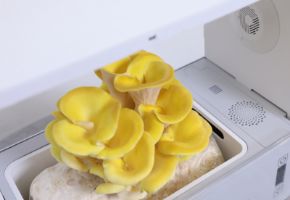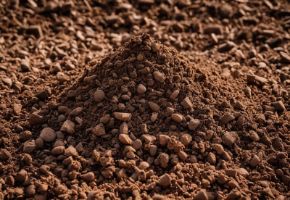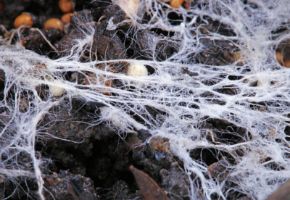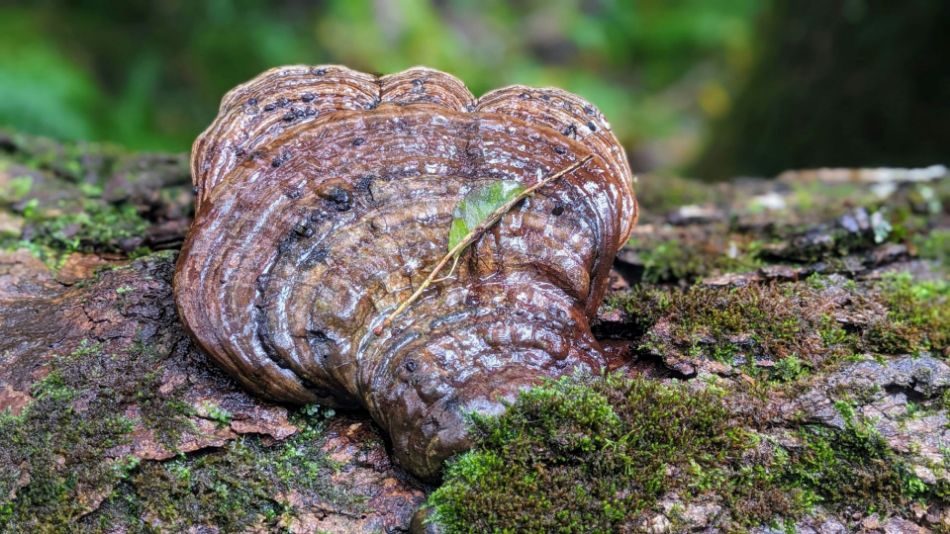When we talk about Ganoderma lucidum, we're not dealing with just any mushroom, but with a true monument of worldwide myco-therapy. Known in the East as Lingzhi (靈芝, "spirit plant") and in the West as Reishi, this extraordinary basidiomycete boasts a medicinal history lost in the mists of time, with documented references dating back to the Shen Nong Ben Cao Jing (3rd century AD), the oldest Chinese pharmacopoeia treatise.
But what makes this mushroom so special? In this encyclopedic guide, we'll analyze every aspect of Ganoderma lucidum with unprecedented detail, examining:
- Its microscopic and macroscopic anatomy with precise measurements
- The biochemical secrets of its unique composition
- Scientific data about its therapeutic properties
- Advanced cultivation techniques
- Traditional uses and modern applications
Taxonomy and nomenclature: the scientific identity of Reishi
Before delving into the characteristics of Ganoderma lucidum, it's essential to properly frame it from a taxonomic perspective. The scientific classification of this mushroom has undergone numerous revisions over the years, demonstrating how complex and fascinating its systematics are.
| Kingdom | Fungi | Belongs to the fungi kingdom, distinct from plants and animals |
|---|---|---|
| Division | Basidiomycota | Produces spores on structures called basidia |
| Class | Agaricomycetes | Shares class with many shelf fungi |
| Order | Polyporales | Fungi with pores instead of gills |
| Family | Ganodermataceae | Family comprising about 80 species |
| Genus | Ganoderma | From Greek "ganos" (brightness) + "derma" (skin) |
| Species | G. lucidum | Epithet referring to the shiny surface |
From a nomenclatural perspective, Ganoderma lucidum presents a complex synonymy reflecting its long study history:
- Polyporus lucidus (W. Curt.) Fr. (1821) - Original denomination
- Fomes lucidus (Fr.) Cooke (1885) - Reclassification
- Ganoderma lucidum (Curtis) P. Karst. (1881) - Currently accepted name
Taxonomic curiosity: Recent molecular phylogenetic studies have revealed that what we call "Ganoderma lucidum" actually comprises a complex of cryptic species, with significant differences between Asian and European strains. This explains why medicinal properties may vary depending on geographic origin.
Morphology: a microscopic and macroscopic analysis
Ganoderma lucidum presents morphological characteristics so distinctive as to make it immediately recognizable even to non-experts. Let's examine every detail with scientific precision.
Macroscopic characteristics
The fruiting body (carpophore) of Ganoderma lucidum is a true masterpiece of nature, with unique characteristics in the fungal kingdom:
| Parameter | Value | Notes |
|---|---|---|
| Diameter | 5-25 cm | Cultivated specimens can reach 30+ cm |
| Thickness | 1-3 cm | Variable depending on age and conditions |
| Shape | Kidney-shaped or fan-like | Often with wavy margins |
| Upper surface | Smooth and shiny | As if varnished (diagnostic character) |
| Color | Red-orange to brown-reddish | With lighter concentric zones |
| Consistency | Woody and hard | Impossible to consume fresh |
The upper surface has a resinous film that reflects light, giving the impression of being lacquered. This protective layer contains many of the bioactive triterpenes responsible for medicinal properties.
Hymenophore structure
The lower part of the mushroom, the hymenophore, deserves separate analysis for its diagnostic importance:
- Type: Poroid (with tubes and pores)
- Color: Creamy white in young specimens, becomes ochre-brown with age
- Pore density: 4-6 pores per mm
- Tube depth: 5-15 mm
- Touch reaction: Rubbing shows characteristic browning
Microscopic data: Under scanning electron microscopy, the pores reveal a perfect hexagonal structure, with openings 150-200 μm in diameter. This geometry optimizes spore dispersal.
Microscopic characteristics
Microscopic analysis is essential to reliably identify Ganoderma lucidum and distinguish it from similar species:
| Element | Characteristics | Dimensions |
|---|---|---|
| Spores | Ellipsoidal, double-walled (endospore and exospore), brown | 8-11 × 5-7 μm |
| Basidia | Clavate, tetrasporic | 20-30 × 7-10 μm |
| Hyphae | Generative with clamps, septate | 2-5 μm diameter |
| Setae | Absent (diagnostic character) | - |
The spores feature a unique double wall:
- Endospore: transparent, about 0.5 μm thick
- Exospore: brown, ornamented with warts and irregular ridges
Habitat and geographic distribution: where does Reishi grow?
Ganoderma lucidum is not a common mushroom to find in nature, and its presence often indicates mature, well-preserved forest ecosystems. Let's analyze its ecological requirements in detail.
Preferred host plants
Reishi is a parasitic saprophyte fungus, first parasitizing the living tree and then continuing to decompose the wood after death. Its preferences are marked:
| Tree species | Colonization frequency | Notes |
|---|---|---|
| Quercus spp. (Oaks) | High (60-70% of findings) | Preferred species in Europe |
| Castanea sativa (Chestnut) | Medium-High | Common host in Italy |
| Fagus sylvatica (Beech) | Medium | Especially in mature forests |
| Platanus spp. (Plane tree) | Medium-Low | In urban environments |
| Conifers | Rare | Only in exceptional cases |
Global distribution
The distribution of Ganoderma lucidum is wide but discontinuous, with genetic differences between populations from various continents:
| Continent | Countries/Presence | Notes |
|---|---|---|
| Asia | China, Japan, Korea, Vietnam, Thailand | Areas with greatest genetic diversity |
| Europe | Italy, France, Spain, Southern Germany | Mainly temperate regions |
| North America | Eastern USA, Southern Canada | Genetically distinct species |
| Africa | Limited to North Africa | Extremely rare south of Sahara |
| Oceania | Present but rare | Probably introduced |
Ecological data: A 2019 study published in NCBI demonstrated that European populations of Ganoderma lucidum show a marked preference for ancient oaks (age >100 years), with a positive correlation between trunk diameter and colonization probability (r=0.78, p<0.01).
Biochemistry of Ganoderma Lucidum: the secret of its power
Reishi's fame as a medicinal mushroom stems from its unique biochemical composition, a veritable cocktail of synergistic active compounds. Let's examine them in detail.
Main classes of bioactive compounds
| Compound class | Percentage (dry weight) | Specific examples | Properties |
|---|---|---|---|
| Polysaccharides | 30-50% | β-D-glucans, ganoderans | Immunomodulatory, antitumor |
| Triterpenes | 10-25% | Ganoderic acids (A-Z), lucidenic acids | Anti-inflammatory, hepatoprotective |
| Proteins | 15-30% | Lingzhi-8, lectins | Immunoregulation |
| Minerals | 5-10% | Germanium, selenium, zinc | Antioxidant |
| Others | 5-15% | Adenosine, sterols | Cardioprotective |
Triterpenes: Reishi's signature molecules
Triterpenes are considered the chemotaxonomic markers of Ganoderma lucidum, with over 150 varieties identified. Here are the most studied:
| Triterpene | Formula | Documented effects | Typical concentration |
|---|---|---|---|
| Ganoderic acid A | C30H44O7 | Hepatoprotective, anti-HIV | 0.2-0.8% |
| Ganoderic acid B | C30H42O7 | Antiallergic | 0.1-0.5% |
| Ganoderic acid C | C30H42O7 | ACE inhibitor | 0.3-1.2% |
| Lucidenic acid B | C27H38O6 | Antitumor | 0.4-1.5% |
| Ganodermanontriol | C30H48O4 | Anti-platelet aggregation | 0.2-0.7% |
Ganoderma Lucidum: nature's gift between science and tradition
After this in-depth journey into the world of Ganoderma lucidum, we can undoubtedly state that we're facing one of the most extraordinary gifts the fungal kingdom has ever offered humanity. This mushroom, which the Chinese have called for millennia "Lingzhi" (靈芝, spirit herb), represents a perfect synthesis between traditional wisdom and modern scientific confirmation.
From its unique morphology - that cap shiny as if polished by divine hands - to its biochemical complexity without equal (over 400 active compounds identified), Reishi continues to amaze researchers and enthusiasts alike. The data speaks clearly: studies published in prestigious journals like "Journal of Ethnopharmacology" and "Scientific Reports" confirm properties that Eastern medicine already knew in the 3rd century BC.
A global perspective: Today Ganoderma lucidum is industrially cultivated in over 20 countries, with estimated worldwide production of 50,000 tons annually (FAO 2022 data). This figure testifies to the enormous scientific and commercial interest in this extraordinary mushroom.
But beyond numbers and laboratory analyses, what's most fascinating about Ganoderma is its ability to speak to different cultures and eras. For the modern physician it's an immunomodulator with proven adaptogenic properties; for the traditional herbalist a Qi balancer; for the mycologist an example of evolutionary perfection; for the philosopher a symbol of longevity and connection between man and nature.
As the famous Chinese pharmacologist Li Shizhen wrote in the "Compendium of Materia Medica" (1590 AD): "Lingzhi nourishes vital spirit, increases wisdom, makes the body light and prolongs life without aging". Today, centuries later, science is revealing the molecular mechanisms behind these ancient intuitions.
In conclusion, Ganoderma lucidum isn't simply one medicinal mushroom among many, but a true bridge between past and future, between empiricism and science, between East and West. Its millennial history and the continuing discoveries of modern research teach us that nature, when observed with respect and curiosity, never ceases to reveal its most precious treasures.
The fungal kingdom is a universe in continuous evolution, with new scientific discoveries emerging every year about their extraordinary benefits for gut health and overall well-being. From now on, when you see a mushroom, you will no longer think only of its taste or appearance, but of all the therapeutic potential it holds in its fibers and bioactive compounds. ✉️ Stay connected - Subscribe to our newsletter to receive the latest studies on: Nature offers us extraordinary tools to take care of our health. Fungi, with their unique balance between nutrition and medicine, represent a fascinating frontier we are only beginning to explore. Continue to follow us to discover how these extraordinary organisms can transform your approach to well-being.Continue your journey into the world of fungi










